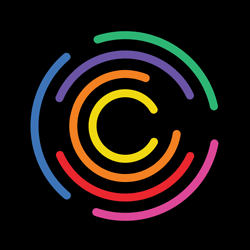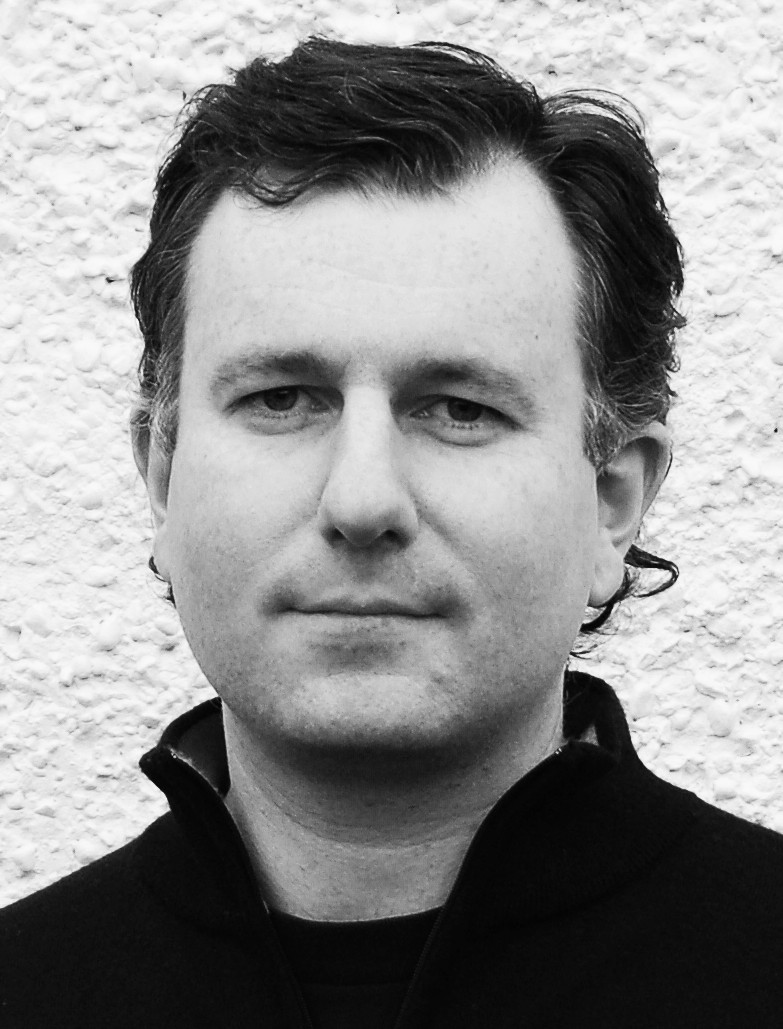
Image by Wes Peck
Earning a good living from your creativity is the Holy Grail for creative people — but what’s the best route to take?
So far in this course we’ve looked at the rise of the creative economy, in which creativity is a key source of competitive advantage for individuals looking to make themselves indispensable. We’ve also considered several ways to develop your creative talent. But how do you join the dots between the big economic picture and your own situation, and choose the most rewarding career path for you?
Clearly there’s no one-size-fits-all answer. Instead, I’ll outline the three most common approaches, to help you choose between them — or even combine them.
1. The Employee
In this scenario you agree to work for an organisation in return for a salary and benefits package. You’re assigned a role and responsibilities, as well as a boss and co-workers, and are expected to deliver specified results. Do a good job, and you can expect to rise within the organisation, with increasing responsibilities and rewards the higher you go. Another big motivation for promotion among creative professionals is the prospect of greater creative freedom — the opportunity to define your own role, make your own decisions and put your own ideas into action.
For many years, commercial workplaces were characterised by order, hierarchy, rules and procedures. Workers were rewarded for obeying their boss, following the rules and ‘playing the game’ of corporate politics. While there are still plenty of workplaces like that around, the growing recognition of the importance of creativity has meant that many companies are promoting a more relaxed and informal culture at work.
Richard Florida has described the ‘no collar workplace’ as typically open and spacious, with employees allowed to wear casual clothes and work the hours that suit them — as long as they deliver results. An extreme version of this is the Results Only Work Environment (ROWE), where employees are allowed do any legal thing they like as long as they deliver on agreed outcomes.
Another big change is that the ‘job for life’ is now seen as a thing of the past, so that employees are expected to have several jobs during their career. For creatives with a low boredom threshold, this can be an appealing prospect, allowing you to take on a series of fresh challenges.
Pros of employment
One big plus of being an employee is the security of knowing your salary will hit your bank account every month. When you don’t have to worry about where next month’s rent or mortgage is coming from, it’s a lot easier to focus on your work. If you land a job at a company that inspires you, with an understanding and supportive boss and talented colleagues, you can learn a tremendous amount. And if the companies you work for reward and promote on merit, you may be able to realise all of your career ambitions as an employee. Another big benefit of working for an organisation is the opportunity to work on large-scale projects that could well be out of your reach as a solo operator.
Cons of employment
Job security is becoming more and more rare — however hard you work to become indispensable, with so much economic uncertainty these days, there are very few employees who are immune from redundancy. And even if you do land a secure job, if you spend too long in your comfort zone this can lead to complacency and diminishing creative ambitions.
But financial considerations pale into insignificance compared to the biggest gripes I hear from employees during coaching sessions: frustration at being micromanaged and/or unappreciated at work. Creative people need a certain amount of freedom in order to perform at their best, and they hate being told what to do and how to do it every step of the way. They also believe rewards should be based on merit, so it’s hard to take when people are promoted based on political expediency rather than talent or achievement.
2. The Freelancer
As a freelancer, you are self-employed and responsible for your own financial affairs, and earn your living by working for hire on client projects. You can choose from different business structures, such as sole trader or limited company. You are responsible for creating a brand, marketing yourself and attracting clients. Assuming you do this well enough, you then get to choose choose the projects you work on and how you schedule your day. It’s up to you whether you work 9-5, all night long or every other week – as long as you get the job done for your clients.
Some people make a distinction between freelancers, independent contractors, and consultants. They argue that a consultant is a higher status role than a freelancer, more like a partner than a hired worker, not just responding to a brief but helping to shape it, and therefore commanding a higher fee. While I agree that among the self-employed there is a wide spectrum of expertise, for the purposes of this lesson I’m including them all under the same heading of freelancer, as they all share the same basic business model: working for hire on other people’s projects. They may charge by the hour, day, week or project, but they are all in the service industry.
Pros of freelancing
To independent-minded creatives, the idea of working for yourself is a powerful attraction. You can choose who to work with, name your own fees and very often choose your own working hours and location. Get a good reputation and you can pick and choose the most attractive assignments. You don’t have to worry about office politics, the daily commute or the boss from hell. And it can be very stimulating to work on a range of different projects for different clients.
Cons of freelancing
For some freelancers, the freedom they were looking for turns out to be an illusion. In theory, they are their own boss, but in reality they have to please their clients, who can be just as demanding and demoralising as any boss. And the more clients you have, the more bosses you have. If you’re getting paid for your time, then time off feels like money down the drain. And most freelancers can relate to the ‘feast and famine’ cycle, where you either have too much work or not enough.
3. The Creative Entrepreneur
Recent years have seen the emergence of a third career path for creative professionals: the creative entrepreneur. Unlike employees, creative entrepreneurs are self-employed. But unlike freelancers, they work on their own business, not clients’ projects.
The word ‘entrepreneur’ conjures up images of tycoons like Richard Branson and Mark Cuban, yet many creative entrepreneurs are not interested in growing enormous business empires; they want to stay small, and spend their time on the creative work they love. Because of this, and the new opportunities created by technology and the internet, they may not need to bother with venture capital funding, but can grow their business organically. (Of course, people like Branson and Cuban are enormously creative, but they probably see themselves as entrepreneurs first and foremost; creative entrepreneurs see themselves as creatives first and entrepreneurs second.)
I wrote a piece for the 99% called Build a Business, Not Just a Client List, in which I challenged creative freelancers to start thinking and acting more like creative entrepreneurs, by building four types of business asset whose value increases over time:
- A Brand – create and project a professional and consistent image.
A brand is more than a clever name and a fancy logo. It’s the image that your customers, clients and audience have of you and/or your company — a.k.a. your reputation. You can’t buy it via advertising — it’s something you earn by doing consistently great work and letting the world know about it. - Online Properties – build websites that grow in value over time.
A popular website that showcases your work and positions you as an authority to the people who matter (to you) is one of the most valuable assets you can have. Reach the right audience and combine it with 3 and 4 and you could turn it into a moneymaking machine. - Permission Assets – build lists of contacts who want to know about your ideas, products, and services.
Blog subscribers, newsletter readers, Twitter followers, Facebook or MySpace friends — these are all people who have given you permission to contact them. The more relevant and valuable messages you send them, the more trust and credibility you earn with them — and the more likely they are to buy from you. No wonder all the top internet marketers say “the money’s in the list”. - Products – turn your knowledge and skills into physical or digital goods for sale.
Another crucial distinction between freelancers and creative entrepreneurs is that the latter sell products, not time. So if you create a great product, and you sell enough of it, you can earn far more money than you ever could charging by the hour. For the purposes of this lesson, ‘product’ can mean either a physical object or an information product such as an e-book, music download or software program. It can include a purely functional product (e.g. software tool), a work of art (e.g. painting or sculpture), or a mixture of the two (e.g. beautifully designed table).
Pros of creative entrepreneurship
Creative entrepreneurship has the potential to give you the best elements of employment and freelancing, without the downside. You can earn enough money to achieve genuine financial freedom, without having to answer to a boss or clients. You’re working on your own projects, with ultimate creative control, which is a great reason to get up in the mornings. And the time you spend developing the four assets is an investment, which generates more money, freedom, influence and opportunities as time goes on.
Cons of creative entrepreneurship
As we all know, risk and entrepreneurship go hand-in-hand. You could spend weeks or months working on a new product, only for it to flop. Succeeding as a creative entrepreneur requires an understanding of markets, trends, business models, product development, sales and distribution. You may well need to bring on partners or contractors to augment your own skillset. So there’s a lot to learn, over and above being really good at your own creative discipline. Only you can decide whether the potential rewards make it worthwhile.
The hybrid career
If you’re reading through the list above, and wondering which is the best option for you, then consider that it’s not necessarily a black-and-white choice. In the course of your career you may well take all three paths at different times — as I’ve done myself.
You may start off as an employee, gaining knowledge and experience, before setting up shop as a freelancer and eventually evolving into a creative entrepreneur.
Or you may be an employee with an entrepreneurial side project that you work on in your free time. This can be a great way of building an audience and road-testing your ideas without taking too many financial risks.
Or you may adopt a hybrid model of self-employment, servicing clients as a freelancer while at the same time taking an entrepreneurial approach to building an audience and taking products to market.
Your career is likely to evolve as you develop your talents and become aware of new opportunities. My purpose in this lesson has been to get you to consider the different options available and perhaps question some of your assumptions about the career path you are currently following. The more options you are aware of, the more chance you have of achieving all your creative and career ambitions.
Beyond career paths: The Guru
Image by Jorge Bassy
If all roads lead to Rome, then maybe all career paths lead to the ultimate pinnacle of achievement, the Guru. This status is reserved for truly outstanding individuals who have not only mastered their own craft and achieved their career ambitions, but have made a noteworthy contribution to their industry or creative field.
The word ‘Guru’ means ‘teacher’, and Gurus earn their status from sharing and teaching, helping others develop. They are also spokespeople for their industry or art form. They use different kinds of platform – books, a blog, a podcast, newspaper column or conference stage to put their ideas out. Sometimes provocative or controversial, they are not afraid to speak their mind if they think it’s something their audience needs to hear.
Gurus attract work and business opportunities like magnets. People queue up to work with them, and they can cherry pick the most lucrative, interesting and meaningful ones. They can use their reputation and network to launch products, services and new businesses. Yet they typically don’t need the money, and are free to concentrate on projects for the greater good, whether charitable or commercial in status.
The hallmark of the Guru is generosity — with their knowledge, contacts and influence. But this isn’t reserved for the Guru stage. You don’t get to be a Guru by ‘looking after number one’ until you reach the top, then suddenly discovering your charitable side. And you don’t get to be a Guru by wanting to be a Guru. Becoming a Guru is a side-effect of a career devoted to learning, creating, sharing and helping others. This is the key to succeeding in whatever career path you choose. Or as Zig Ziglar put it more pithily than me:
I believe you can have anything in life you want — if you’ll just help enough other people get what they want.
Worksheet
Podcast episodes
The following episodes of The 21st Century Creative Podcast touch on the themes of today’s lesson:
Creating a Job that Doesn’t Exist with Aileen Bennett
Tina Roth Eisenberg’s Labours of Love
Designing a Global Small Business with Laurie Millotte
Creating a Business You Are Proud of with Patricia van den Akker
The Business of Sharing Joy with Daniel Boettcher
The Entrepreneur Ethos with Jarie Bolander
SheEO: Women Transforming Entrepreneurship with Vicki Saunders
Don’t Just Sell Something: Do Something! with David Hieatt
Brutally Honest Advice for Your Creative Business with Emily Cohen
Other resources
Written by me, unless otherwise indicated
21 Insights for 21st Century Creatives – my book. You can pick up the ebook edition for free.
Maximize Your Potential: Grow Your Expertise, Take Bold Risks & Build an Incredible Career – I contributed a chapter to this book from 99U. Other contributors include Scott Belsky, Cal Newport, Michael Bungay Stanier and Teresa Amabile.
Forget the Career Ladder – Start Creating Assets
Ignore Everybody: and 39 Other Keys to Creativity by Hugh MacLeod
Employment
Linchpin: Are You Indispensable? by Seth Godin
The Adventures of Johnny Bunko: The Last Career Guide You’ll Ever Need by Dan Pink. The only career guide I know of in manga format. A fun read containing important lessons.
Creative Choices website – career advice and resources for creative pros. UK-focused but a lot of the information applies wherever you live.
Freelancing
The Hierarchy of the Successfully Self-Employed by Tony Clark. A provocative look at options for self-employment, beginning with the Freelancer, then moving up through Contractor and Expert to the Guru.
A Beginner’s Guide to Freelancing by Phil Gyford – great free guide.
Men with Pens – Lots of solid advice for small business owners from James Chartrand and her team.
How to Draft a Freelance Contract by Rob Bowen
Creative Entrepreneurship
The 3 Critical Characteristics of the Creative Entrepreneur
Do You Really Want to Earn a Living from Your Creativity?
The Story of a Reluctant Entrepreneur – my own journey towards creative entrepreneurship
Make Your Mark: The Creative’s Guide to Building a Business with Impact – Another great guide from 99U. Contributors include Seth Godin, Tim O’Reilly, Chris Guillebeau and John Maeda.
T-shirts and Suits: a Guide to the Business of Creativity by David Parrish. Great free e-book for creative entrepreneurs.
The Shakespearean Guide to Entrepreneurship
The Kurt Cobain Guide to Startup Success by Brian Clark
Tune in next week …
… when we’ll ask whether a truly creative person should bother having a resume / c.v.
About The 21st Century Creative
Copyright © Mark McGuinness 2010-2019



